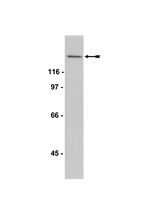Somatostatin receptors 1 and 5 heterodimerize with epidermal growth factor receptor: agonist-dependent modulation of the downstream MAPK signalling pathway in breast cancer cells.
Heather L Watt,Geetanjali D Kharmate,Ujendra Kumar
Cellular signalling
21
2009
Mostrar resumen
The role of somatostatin (SST) and epidermal growth factor (EGF) in breast cancer is undisputed; however, the molecular mechanisms underlying their antiproliferative or proliferative effects are not well understood. We initially confirmed that breast tumour tissues express all five somatostatin receptors (SSTR1-5) and four epidermal growth factor receptors (ErbB1-4). Subsequently, to gain insight into the function of SSTRs and ErbBs in oestrogen receptor (ER)-positive (MCF-7) or ERalpha-negative (MDA-MB-231) breast cancer cells, we defined SSTR1, SSTR5 and ErbB1 mRNA and protein expression in these two tumour cell lines. Consistent with previous studies showing SSTR1/SSTR5 heterodimerization and having seen cell-specific and ligand-selective alterations in receptor expression, we next elucidated whether SSTR1 and SSTR5 functionally interact with ErbB1 using pbFRET analysis. We subsequently determined the effects of SST and EGF either alone, or in combination, on selected downstream signalling molecules such as erk1/2, p38 and JNK. Here, we showed that both SST and EGF influenced erk1/2 phosphorylation and that SST modulated the effects of EGF in a cell-specific manner. We also demonstrated agonist-, time and cell-dependent regulation of p38 phosphorylation. We further investigated modulation of Grb2, SOS, Shc, SH-PTP1 and SH-PTP2. ErbB1 adaptor proteins known to play a role in MAPK activation, Shc, Grb2 and SOS, changed in an agonist- and cell-specific manner whereas, SH-PTP1 and SH-PTP2, adaptor proteins reported to interact with SSTRs, translocated from the cytosol to membrane in a cell-specific manner following SST and/or EGF treatment. Although several previous studies have shown crosstalk between RTKs and GPCRs, there are no reports describing SSTR (GPCR) modulation of ErbBs (RTK) in breast cancer. To the best of our knowledge, this is the first report describing crosstalk/interactions between SSTRs and ErbBs. | | 19070659
 |
T cell receptor-induced phosphorylation of Sos requires activity of CD45, Lck, and protein kinase C, but not ERK.
Zhao, H, et al.
J. Biol. Chem., 272: 21625-34 (1997)
1997
Mostrar resumen
Stimulation of the T cell antigen receptor (TCR) activates signaling pathways involving protein kinases, phospholipase Cgamma1, and Ras. How these second messengers interact to initiate distal activation events is an area of intense scrutiny. In this report, we confirm that TCR ligation results in phosphorylation of Sos, a guanine nucleotide exchange factor for Ras. This requires expression of both the CD45 tyrosine phosphatase and the Lck protein tyrosine kinase and depends upon signaling via protein kinase C. In contrast to previous studies examining requirements for Sos phosphorylation following insulin and epidermal growth factor receptor engagement, we show that TCR-induced phosphorylation of Sos does not require activation of the mitogen-activated protein kinase/extracellular-signal regulated kinase (MEK/ERK) pathway. However, the basal phosphorylation of Sos in T cells is affected by either MEK or MEK-dependent kinases. Although Sos phosphorylation results in its dissociation from Grb2 following insulin stimulation in Chinese hamster ovary cells, TCR engagement on the Jurkat T cell line fails to elicit a similar effect. These data demonstrate that the kinases responsible for Sos phosphorylation differ following ligation of various cell surface receptors and that the consequences of Sos phosphorylation relies, at least in part, on sites of its phosphorylation. | Phosphatase Assay | 9261185
 |
STAT3 is a serine kinase target in T lymphocytes. Interleukin 2 and T cell antigen receptor signals converge upon serine 727.
Ng, J and Cantrell, D
J. Biol. Chem., 272: 24542-9 (1997)
1997
Mostrar resumen
Interleukin 2 (IL-2) induces tyrosine phosphorylation of STATs 3 and 5 (signal transducer and activator of transcription). We now show that IL-2 regulation of STAT3 proteins in T cells is a complex response involving activation of two forms of STAT3: 90-kDa STAT3alpha and an 83-kDa carboxyl-terminal truncated STAT3beta. The phosphorylation of STAT proteins on serine residues is also required for competent STAT transcription. A critical serine phosphorylation site in STAT3alpha is at position 727. In this study we have produced an antisera specific for STAT3alpha proteins phosphorylated on serine 727 and used this to monitor the phosphorylation of this residue during T lymphocyte activation. Our results show that phosphorylation of STAT3alpha on serine 727 is not constitutive in quiescent T cells but can be induced by the cytokine IL-2. Interestingly, triggering of the T cell antigen receptor complex or activation of protein kinase C with phorbol esters also induces phosphorylation of serine 727 but without simultaneously inducing STAT3 tyrosine phosphorylation or DNA binding. Hence, the present results show that STAT3 serine phosphorylation can be regulated independently of the tyrosine phosphorylation of this molecule. IL-2 and T cell antigen receptor complex induction of STAT3alpha serine 727 phosphorylation is dependent on the activity of the MEK/ERK pathway. Previous studies have identified H-7-sensitive kinase pathways that regulate STAT3 DNA binding. We show that H-7-sensitive pathways regulate STAT3 DNA binding in T cells. Nevertheless, we show that H-7-sensitive kinases do not regulate STAT3 tyrosine phosphorylation or phosphorylation of serine 727. These results thus show that STAT3 proteins are targets for multiple kinase pathways in T cells and can integrate signals from both cytokine receptors and antigen receptors. | | 9305919
 |










